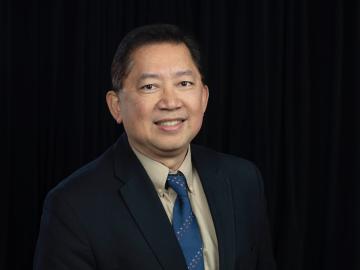Filter News
Area of Research
- Advanced Manufacturing (19)
- Biological Systems (16)
- Biology and Environment (143)
- Biology and Soft Matter (5)
- Building Technologies (5)
- Chemical and Engineering Materials (3)
- Chemistry and Physics at Interfaces (11)
- Clean Energy (349)
- Climate and Environmental Systems (9)
- Computational Biology (5)
- Computational Chemistry (5)
- Computational Engineering (3)
- Computer Science (8)
- Data (1)
- Earth Sciences (1)
- Electricity and Smart Grid (2)
- Energy Frontier Research Centers (14)
- Energy Sciences (3)
- Fossil Energy (2)
- Fuel Cycle Science and Technology (3)
- Functional Materials for Energy (16)
- Fusion and Fission (49)
- Fusion Energy (9)
- Geographic Information Science and Technology (3)
- Isotope Development and Production (1)
- Isotopes (29)
- Materials (343)
- Materials Characterization (2)
- Materials for Computing (26)
- Materials Synthesis from Atoms to Systems (13)
- Materials Under Extremes (12)
- National Security (69)
- Neutron Data Analysis and Visualization (2)
- Neutron Science (151)
- Nuclear Science and Technology (54)
- Nuclear Systems Modeling, Simulation and Validation (1)
- Nuclear Systems Technology (1)
- Quantum Condensed Matter (4)
- Quantum information Science (6)
- Reactor Technology (1)
- Renewable Energy (2)
- Sensors and Controls (3)
- Supercomputing (267)
- Transportation Systems (9)
News Type
Date
News Topics
- 3-D Printing/Advanced Manufacturing (82)
- Advanced Reactors (19)
- Artificial Intelligence (70)
- Big Data (32)
- Bioenergy (72)
- Biology (78)
- Biomedical (46)
- Biotechnology (17)
- Buildings (31)
- Chemical Sciences (51)
- Clean Water (15)
- Climate Change (70)
- Composites (15)
- Computer Science (138)
- Coronavirus (34)
- Critical Materials (12)
- Cybersecurity (32)
- Decarbonization (61)
- Education (3)
- Element Discovery (1)
- Emergency (2)
- Energy Storage (70)
- Environment (143)
- Exascale Computing (33)
- Fossil Energy (5)
- Frontier (37)
- Fusion (41)
- Grid (38)
- High-Performance Computing (71)
- Hydropower (5)
- Irradiation (1)
- Isotopes (41)
- ITER (4)
- Machine Learning (33)
- Materials (105)
- Materials Science (94)
- Mathematics (5)
- Mercury (9)
- Microelectronics (2)
- Microscopy (36)
- Molten Salt (3)
- Nanotechnology (44)
- National Security (51)
- Net Zero (10)
- Neutron Science (99)
- Nuclear Energy (81)
- Partnerships (39)
- Physics (49)
- Polymers (20)
- Quantum Computing (25)
- Quantum Science (54)
- Renewable Energy (2)
- Security (21)
- Simulation (38)
- Software (1)
- Space Exploration (14)
- Statistics (2)
- Summit (51)
- Sustainable Energy (75)
- Transformational Challenge Reactor (7)
- Transportation (53)
Media Contacts

ORNL researchers have teamed up with other national labs to develop a free platform called Open Energy Data Initiative Solar Systems Integration Data and Modeling to better analyze the behavior of electric grids incorporating many solar projects.

ORNL researchers have produced the most comprehensive power outage dataset ever compiled for the United States. This dataset, showing electricity outages from 2014-22 in the 50 U.S. states, Washington D.C. and Puerto Rico, details outages at 15-minute intervals for up to 92% of customers for the eight-year period.

Four ORNL researchers traveled to Warsaw, Poland, during the first week of April to support the opening of Poland’s first Clean Energy Training Center, a regional hub dedicated to providing workforce development and training to expand new nuclear capacity in Central Europe.

ORNL scientists are working on a project to engineer and develop a cryogenic ion trap apparatus to simulate quantum spin liquids, a key research area in materials science and neutron scattering studies.

Rigoberto “Gobet” Advincula, a leader in advanced materials, polymers and nanomaterials with joint appointments at ORNL and the University of Tennessee, has been named to the U.S. National Academies of Sciences, Engineering and Medicine’s Board on Chemical Sciences and Technology.

Researchers at ORNL are using a machine-learning model to answer ‘what if’ questions stemming from major events that impact large numbers of people. By simulating an event, such as extreme weather, researchers can see how people might respond to adverse situations, and those outcomes can be used to improve emergency planning.

Scientists at ORNL completed a study of how well vegetation survived extreme heat events in both urban and rural communities across the country in recent years. The analysis informs pathways for climate mitigation, including ways to reduce the effect of urban heat islands.

The BIO-SANS instrument, located at Oak Ridge National Laboratory’s High Flux Isotope Reactor, is the latest neutron scattering instrument to be retrofitted with state-of-the-art robotics and custom software. The sophisticated upgrade quadruples the number of samples the instrument can measure automatically and significantly reduces the need for human assistance.

A collection of seven technologies for lithium recovery developed by scientists from ORNL has been licensed to Element3, a Texas-based company focused on extracting lithium from wastewater produced by oil and gas production.

The new section of tunnel will provide the turning and connecting point for the accelerator beamline between the existing particle accelerator at ORNL’s Spallation Neutron Source and the planned Second Target Station, or STS. When complete, the PPU project will increase accelerator power up to 2.8 megawatts from its current record-breaking 1.7 megawatts of beam power.




